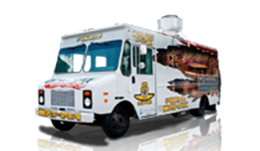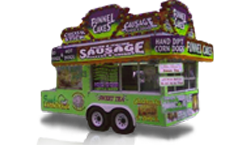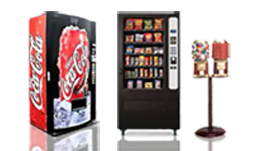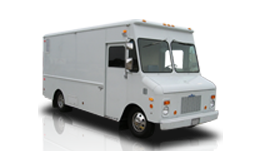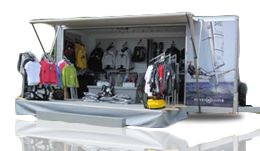Semi Truck Lighting Regulations in America: What Every Trucker Should Know

Did you know that old vehicles used fuel lamps to light themselves up? During the early 1900s, Ford used carbides as headlights and oil lamps on tails. In 1915, electric lighting was invented resulting in the creation of dip lighting for automobiles. Your truck’s lighting is very important. It is a safety feature that helps you see where you are going. It also helps others see your truck even on dark roads or inclement weather. Yet, every trucker should know how to use them properly. Below are the basics of semi truck lighting regulations in America.
What’s Inside
Types of Truck Lights and Their Uses
Every trucker should know the types of lights attached to a semi-truck and what are their uses.
Blinkers
Blinkers or signal lights are located in the front and back end of a truck. These lights should be activated every time you are about to take a left or right turn. It warns other people traveling behind your truck to slow down as you are going to make a turn. You should also use your truck’s blinkers before:
- Changing lanes
- Entering a driveway on any side of the street
- Merging with traffic on the road or highway
- Parking on any side of the road
- Passing through another vehicle
- Pulling over to the side ramps
- When you are about to leave a roundabout
Use the blinkers approximately 100 feet before reaching intersections and 900 feet when changing lanes, exiting, or overtaking a highway.
Brake lights
These are bulbs located on the taillights that activate once a trucker puts pressure on the brakes. They serve as a safety signal for drivers behind the truck that you are slowing down or making a stop. Brake lights are much brighter than tail lights for increased visibility at night.
Driving lamps
These are located inside the cab of your semi-truck. This light is used to brighten the inside of the cab for the driver to locate things or see the map for directions. Never use the driving lamps for a long period while driving. It can distract road visibility over time.
Flashers
Flashers or hazard lights are small flashes of light that resemble the lightning effect. They are located at the back and front of a truck. Flashers should only be used to warn other vehicles of a particular danger. These may include an emergency, mechanical breakdown, rocks on the road, or slow-moving traffic. Never ever use flashers as an illegal parking permit or a stop signal.
Headlights
These illuminate the road ahead for truckers to see where they are going. There are two settings for headlights. Low beams distribute lights laterally. Use them if you are around 200 to 300 feet from an incoming vehicle. This is to avoid blinding other drivers on the road from excessive glares. High beams distribute an intense glare on the center of the road. Use them when driving on rural areas or highways where the roads are poorly lighted and inconsistent. Alternatively, dim them when a vehicle is approaching from around 500 feet. As a safety tip, never retaliate against other vehicles using high beams. Doing the same may cause both of you to be blind from the road and there’s a higher risk of being involved in an accident.
Taillights
These are red lights at the back of a semi-truck. They turn on when the headlights are on. These lights help those who are traveling behind your truck to see from afar. It is important to have your truck’s headlights and tail lights on when the sun sets down or the road gets dark.
Semi-Truck Lighting Regulations in America
The Federal Motor Vehicle Safety Standard (FMVSS) 108 regulates the lighting standards among semi-trucks. Truck manufacturers should adhere to the specifications stated on the rules. It is also important for truckers to maintain these lights properly and see to it that they are working fine. Failure to do so can be a case of negligence against the truck driver or operator.
Other federal and state regulations provide directions in the proper placement and use of truck lightings. In case there are conflicts between the FMVSS, federal, or state regulations, the rule of the higher body takes precedence. For example, Texas allowed auxiliary lights on trucks. But because of the FMVSS safety regulation, they should be removed or uninstalled.
As a general rule, all semi-truck lights should function at all times. They should be positioned properly in the truck and their external cover must not be cloudy. Driving lamps or chicken lights must be amber facing forward and red facing back. Neon under glows or underbody lightings is generally prohibited in most US states. Only Arizona, California, and Kansas allow them but still with color and placement restrictions.
Semi-trucks have different tail light requirements. Generally, they should have reflectors, stop lights, tail lights, tractor marker lights, and turn signals. Trailers up to 30’ long or 80’ feet wide must have at least 5 marker lights at the front and 6 marker lights at the back. The 5 amber lights at the front must be positioned on top of the semi-cab. While 2 of the clear or red lenses at the back must be positioned on the center and 4 on the corners.
Every trucker should know that the lighting regulations in America are set to promote safety on the road. That is why it is best to adhere to these rules, not just for compliance but to keep yourself and others safe.
Check out our other articles about safe trucking:
- How to Secure Goods Being Transported by Your Semi Truck
- Protection on the Road: Can Truck Drivers Carry Guns?
- Safety Tips You Should Know Before Driving Your Dump Truck
- Truck Driving Hazards And How To Avoid Them
And if you need a new truck, we have semi trucks for sale at UsedVending.


